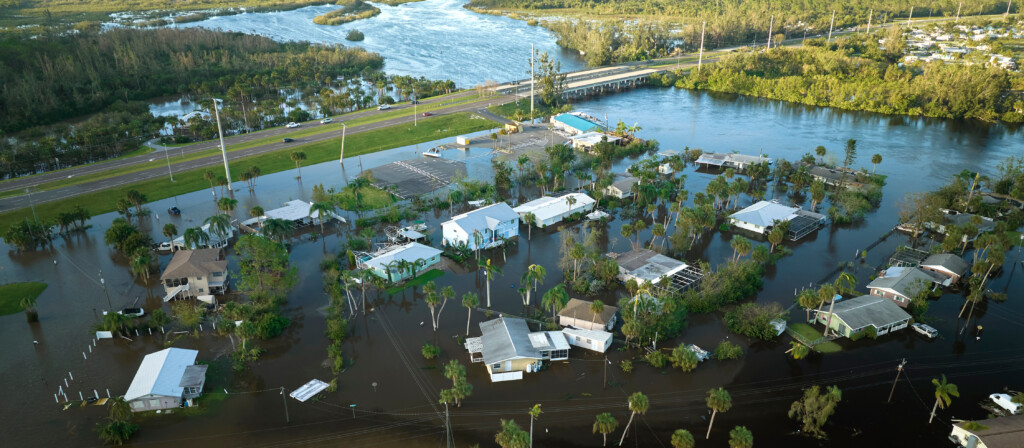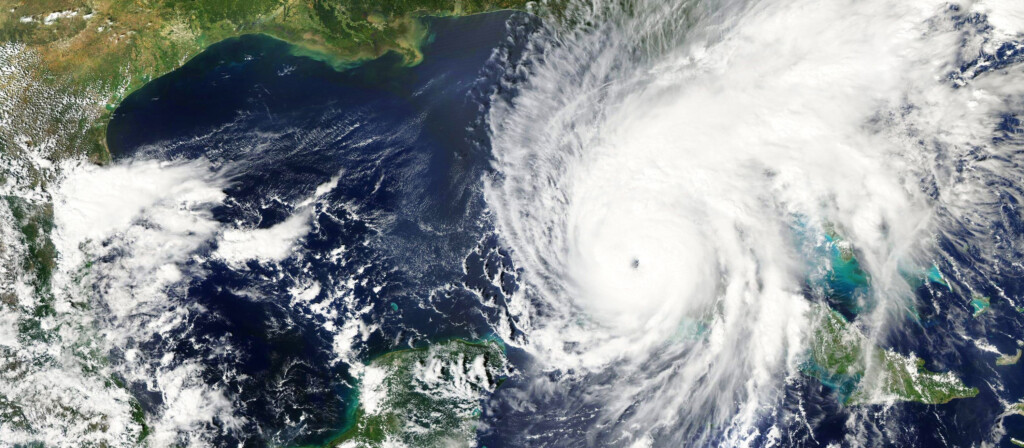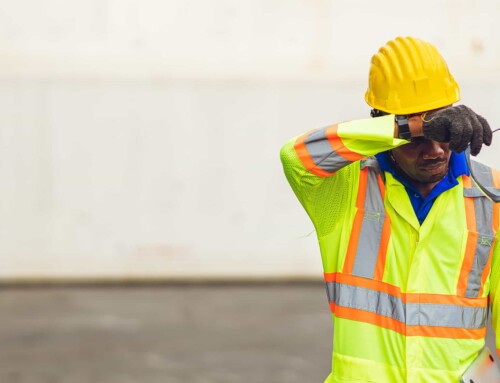It has been almost five months since Hurricane Ian dissipated, but the effects of the historic storm are still being felt by property owners and the adjusters tasked with valuing their loss. Few have been spared by the billions of dollars in damage while property and casualty adjusters have diligently worked around the clock to ease the pain and frustration of policy owners.
Insurance adjusters are on the ground day in and day out, working to put the piece of homeowner lives back together. The road to recovery has been a bumpy one.

Hurricane Ian flooded houses in Florida residential area. Natural disaster and its consequences.
Impact on the Adjusters
From a claims perspective, Ian has been a logistical nightmare. Johns Eastern’s TPA Services team has fielded twice the number of claims for Hurricane Ian, the country’s third costliest tropical storm ever, than for Hurricane Irma, the fifth costliest, in 2017.
To handle the influx of claims, Johns Eastern created a call center just for the Hurricane Ian response, with as many as fifteen admin staff and eight people answering phones at various times. For two and a half months, our teams worked many nights and weekends and as long as 15 hour days, handling almost 8000 claims between the field office and Excess & Surplus TPA unit. Over the course of the response the Catastrophe team rotated between 103 adjusters.
Our field adjusters and examiners faced a number of complications and sometimes literal roadblocks. These obstacles impacted their ability to get to affected areas and assess insured properties. While this occurs in almost every major storm response, the range and scope of the damage from Ian was a unique challenge
Hurricane Ian had a large storm surge, between 12 and 15 feet, causing a massive influx of ocean water to overflow lakes, rivers and streams, and flood roadways. Therefore, flood damage was greater than other storms. Because of the volume of the storm surge, the area impacted was considerably further inland than what typically occurs when a hurricane makes landfall. This also proved to be an additional challenge for inspectors attempting to determine what damage was caused by high winds and what was the result of storm surge or flooding.
The wide swath of damage immediately following the hurricane made accessibility limited or even impossible for emergency response teams. There were issues with debris blocking roads and collapsed bridges isolating many of the islands off the coast of Florida. One Johns Eastern field adjuster even purchased an electric bike and paid a local boat captain to ferry him to and from the islands.
Adjusters were also affected by the new Florida legislation which dictates that a public adjuster can no longer also serve as an appraiser for the same homeowner.
Most of these areas were without power and water, and because of the flooding and dangerous roads, local municipalities and linemen weren’t able to immediately begin clearing debris and fixing power lines. In some of the more heavily affected areas, there was no fuel, no lodging, and no cell service. That causes a massive issue for the field teams. When adjusters and examiners travel for storm response they often are forced to stay as far as 60 miles from the properties that they are assigned to inspect. The lack of cell service made it difficult to get in touch with the insureds, as well, causing delays in gathering information and providing updates.

Hurricane Ian by the Numbers
According to updated statistics from the Florida District Medical Examiners the confirmed death toll for Ian reached 149 in Florida. This puts Ian on record as the deadliest storm to hit Florida in 87 years, since the Labor Day hurricane of 1935. An additional five in North Carolina and one in Virginia lost their lives.
Hurricane Ian is also the third costliest tropical storm to ever hit the United States based on data from the National Centers for Environmental Information. While totals are still being assessed even now, the estimates currently place the losses at $112.9B. Of this, insured losses make up between $42B and $57B. The majority of this is caused by wind wind damage, storm surge makes up $3B to $5.5B and flood damage less than $1B.
Storm damage is likely to continue to reach $100B in coming years. Inflation and increased coastal growth, coupled with environmental impacts from climate change will likely make these mega-storms the new reality. The U.S. has been impacted by landfalling category 4 or 5 hurricanes in five of the last six years including Harvey, Irma, Maria, Michael, Laura, Ida, and now Ian.
—
For information on hurricane preparation see our blog here.





